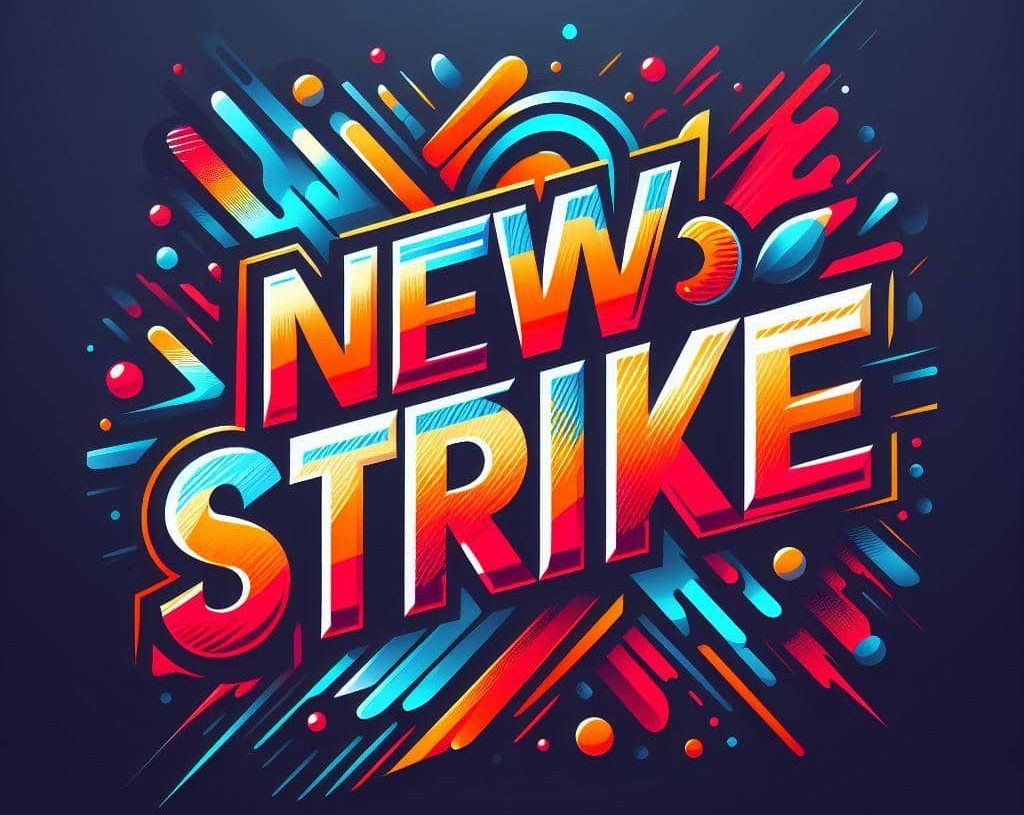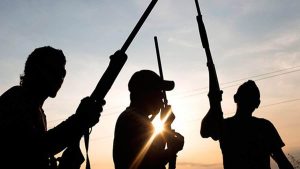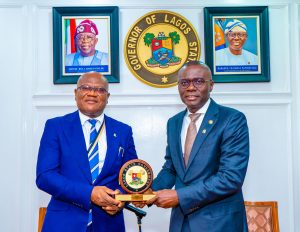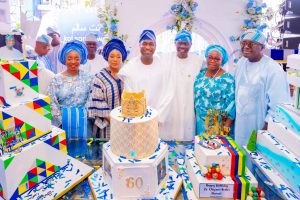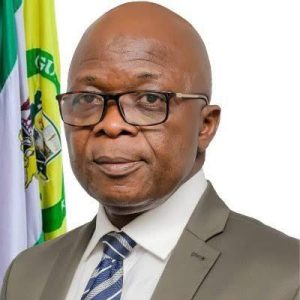(TRAVELOGUE) Visiting Senegal
8 min read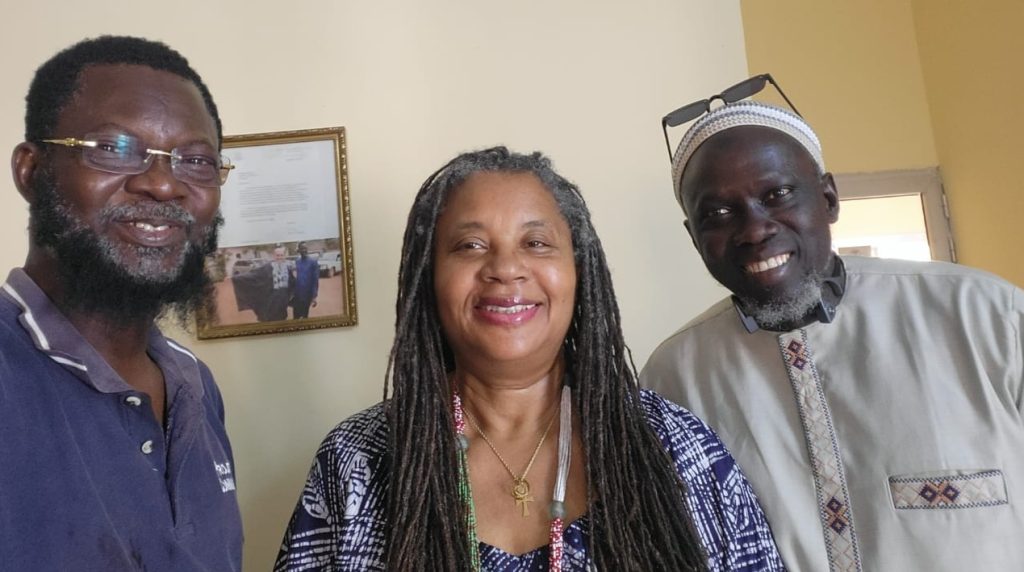
By Atim Eneida George, Ph.D.
https://generativegaze.org
I traveled to Senegal on May 18, 2024, under the auspices of Winrock International’s Farmer to Farmer (F2F) Program. Winrock International serves as an implementing partner to the U.S. Agency for International Development (USAID). In the process, I had the opportunity to collaborate with a remarkable group of leaders from the Keur Maba Diakhou Society (KMD), affectionately called the Cooperative, is a dynamic organization that is transforming lives in Senegal’s rural communities.
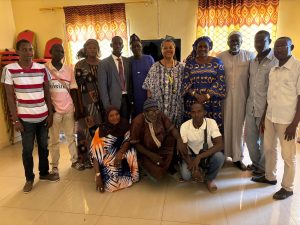
Ably led by President Adjaratou Seynabou Fall, KMD is at the cutting edge of rural development. They are creating jobs and improving livelihoods for over 800 farmers, the majority of whom are women. It was a remarkably inspirational experience.
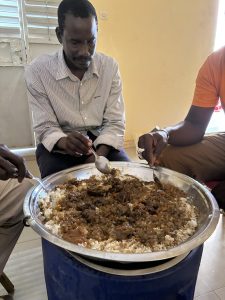
Traveling approximately 3 hours southeast of Senegal’s capital city, Dakar, I spent 9 days in Kaolack, the capital of the Kaolack Region. From there, we travelled approximately 1.5 hours each way to Keur Maba Diakhou to conduct an organizational capacity building program that included a robust interactive leadership development component. Mr. Abibou Diaw, the Farmer to Farmer Country Director and his colleague Mr. Youssouph Sané were the consummate hosts introducing me to the Senegalese institution of teranga, roughly translated hospitality.
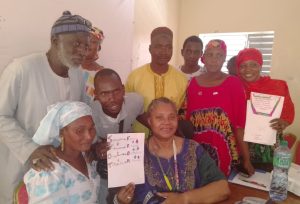
I remain profoundly grateful to Winrock International’s Farmer to Farmer (F2F) Program and the leaders of the Keur Maba Diakhou Society. The KMD is leading the way in terms of job creation, income generation, poverty alleviation and rural development. They made me welcome by sharing the power of their stories and their accomplishments with me.
Each day, I offered the participants an artifact which, in my view, held special meaning and value. On the first day, for example, I gave each participant a Prosper Africa lapel pin. That, in essence, represented both our individual and collective purpose—to realize a prosperous Africa. Participants subsequently received a UNDP Sustainable Development Goals (SDGs) lapel pin. Each of the other days, participants selected a card or capsule containing a positive affirmation which Mr. Diaw ably translated into French and/or Wolof. Thus, each day, participants had time to consider important leadership concepts such as focus, dedication, mindfulness, integrity, innovation, etc. In addition, I started the first few sessions with breathing exercises and made sure to take daily stretch breaks.
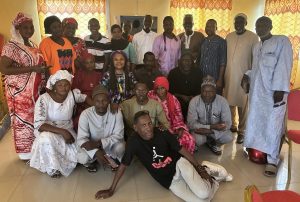
George et al (2007) assert that, to be effective, leaders must understand their own stories. Their admonition informed my approach to this 5-day organizational capacity building program. I also employed the African philosophical construct, Ubuntu, which teaches that “I am because we are and we are because I am” when designing and delivering the content. Indeed, I repeatedly explained the importance of working both individually (I am) and collectively (we are).
George, B., Sims, P., McLean, A. N., & Mayer, D. (2007). Discovering your authentic
leadership. Harvard Business Review, 88(2) 129–138.
Best Self Methodology
I identified a series of activities focusing on organizational capacity building and leadership development within KMD. I began by using the Best Self methodology drawn from Positive Organizational Scholarship (POS), a branch of Leadership Studies. The Best Self methodology asserts that families, organizations and communities thrive when we bring our best selves to our endeavors. Participants were asked to reflect upon their lived experience and then to select examples of when they showed up at their best.
In addition, trainees used the 20 Words Exercise, they reviewed a series of positive attributes that they possessed or hoped to develop. The 20 Words Exercise asks participants to make choices about their selections until they are left with one key leadership attribute. I used variations on this theme, at one point asking participants to trace the outlines of their hands and select a word for each finger. I then asked participants to write the most important attribute or word at the top of the image. I extended the exercise by asking participants for examples in which, as an organization, KMD was at its best.
My hope is that KMD leaders will share the Best Self methodology throughout the organization on an ongoing basis. I developed a Facilitator’s Manual for the Best Self Workshop and a slide deck to introduce and reinforce the key concepts.
River of Life Methodology
I incorporated the River of Life (RoL) methodology, an arts-informed approach, into the program. The RoL process invites participants to reflect upon their lived experience and represent important developments using the river as a metaphor. In addition to drawing their individual RoL, participants met in small groups and drew collective organizational RoL. This process afforded participants opportunities to discuss reasons they were inspired to join KMD.
Figure 3 contains the River of Life drawing by a powerful Senegalese woman who, like my Ancestors, transcended her socially ascribed status of victim. While subject to child marriage, poverty and exploitation, she has become an actor able to effect change. The lesson I draw from her lived experience is that we can overcome the obstacles that would label us victims and seize our authentic identities as powerful beings, who with discipline, vision and focused intent, are able to change our circumstances.
During the course of our capacity building program, participants examined scenarios involving real world challenges that farmers, small business owners, educators and health workers encountered. Using these interactive learning opportunities, participants were introduced to the Needs Assessment, Communications and Advocacy and tools such as the SWOT analysis and Prioritization Matrix.
Serendipitously, the U.S. African Development Foundation (USADF) announced a grant opportunity for agricultural cooperatives; Senegal is one of the qualifying countries. I provided the link to the French version of the Call for Proposals ( https://usadf.gov/usadf-rfa) and the USADF Senegal Country Office. We devoted time on days 4 and 5 of the program to review the Call of Proposals. KMD leaders identified a series of questions which their Secretary General, Mr. Papa Samba Dramé, raised in a telephone call with Mr. Ibrahima Yade, a USADF implementing partner. I prepared a series of recommendations that include discreet tasks they may opt to undertake to strengthen their application for up to US$250,000 in grant funding.
In addition to the foregoing, we also paid an impromptu courtesy call on USAID’s Mr. Massamba Diop who manages the agency’s activities in the Kaolack Region.
Figure 10: Mr. Diop, Dr. G and F2F Country Director Diaw
Visiting the Djilor Vocational Training Center
Figures 11 & 12: Djilor Vocational Training Center Horticultural Students, Faculty and Staff
We visited the Djilor Vocational Training Center in SenegaI on May 22, 2024. There we met several young women enrolled in Agricultural Training Programs ranging from 6 months to 3 years in duration. Their studies are being sponsored by F2F-funded scholarships. During our visit, they showed us cabbage, radishes, tomatoes, cucumbers, eggplants, sweet peppers and, my favorite, okra.
They are experimenting with strawberries and are testing the viability of a hybrid lettuce. These young women are creating a seed bank to ensure they have access to high-quality seeds, one key to sustainable produce. Once weekly, they take their products to the market. In the process of undertaking their studies, they are learning practical skills that contribute to Senegal’s prosperity.
I had the opportunity to address these impressive young women. In so doing, I asked them to tend their mental gardens admonishing them to remember to select seeds that lead to abundant prosperity. I charged them to remember to water those seeds with positive thoughts and affirmations. I also cautioned them to weed out negative thoughts such as fear and failure. I reminded them that they already know how the system of sowing and reaping works. I shared my dream of returning to Senegal to find them supplying healthy foods to Senegal’s schools, restaurants, hotels and other business establishments. Thank you Winrock International for investing in Senegal’s women; they are a force multiplier. I say yes to the women of Senegal and thank you to Winrock International!
Scenes from Senegal
During the course of my travels, I learned that Senegal’s food culture is deliciously innovative!
I was speechless when I encountered Senegal’s monument to the African Renaissance. My research revealed that the monument was designed by Senegalese architect Pierre Goudiaby Atepa. It took two years to complete the construction (2008-2010). Mansudae Overseas Projects, a North Korean company known for building large-scale monuments, worked on this project. The monument stands 49 meters (160 feet) tall and depicts a man, woman, and child ascending a hill, symbolizing Africa’s emergence from a long history of struggle towards a brighter future.
Visiting Goree Island, A UNESCO World Heritage Site
YOU MAY ALSO LIKE: https://newsstrike.com.ng/2024/06/12/june-12-nigerians-are-angry-pdp-tells-tinubu/
I was pleased to encounter this monument honoring Africa’s Human Rights Icon, Nelson Mandela. In South Africa, he is affectionately known by his clan name Madiba. President Mandela visited Goree Island to pay tribute to the millions of Africans who were taken from their homeland in chains. I was delighted to learn that each year on the anniversary of his birth, Goree Island pays tribute to Madiba.
I encountered the image I named Serene Dignity (Figure 18 ) as I was leaving Goree Island. I found it fascinating that I did not take notice of her upon my arrival. To me, she is striking, beautiful, serene and compelling. I just had to include her profoundly dignified visage in this report.
Our planet continues to grapple with the toxins of institutional racism and structural inequality, legacies of the heinous racialized trade in human beings that engulfed our world for more than 400 years. I firmly believe we must confront this ugly past with an enduring commitment to transcend it and build a better world for us all. My work in the world, as exemplified by Generative Gaze, is not only about calling attention to this past, but inviting people of good will to join me in co-creating a new dispensation that is harmonious, just, peaceful and sustainable.
Closing Reflection
I consider my 2-week volunteer experience in Senegal a transformative one. For the first time, I conducted training with a wide spectrum of participants ranging from the unschooled to university graduates. Please note that the term unschooled is not synonymous with uneducated. I have no doubt that KMD selected the participants carefully as they represent an important cross section of their membership. This experience has taught me the profound value of the lived experience of rural farmers.
In the case of KMD, their members are being transformed from among the world’s most vulnerable into self-sufficient producers able to provide for their families. For example, as I listened to the feedback from Fatu, the KMD leader who said that while she did not speak or write French or English, she felt involved from the beginning and benefitted from the training; she pointed to the River of Life as a tool for sharing her experience as a child bride affording her the opportunity to explain that she would have to provide for her children as her husband lacked the capacity.
With the help from the Cooperative, she owns a business and is able to educate her children. I learned from Demba, the old man whose words conveyed profound and genuine respect for Mrs. Fall, the woman who leads KMD; his repeated affirmation of her leadership qualities conferred legitimacy and, I believe, influenced the younger men to acknowledge her leadership acumen and professional prowess. I close with a profound sense of gratitude at being afforded this opportunity to serve.
Send your questions and comments about this summary report to generativegazeventures@gmail.com.
